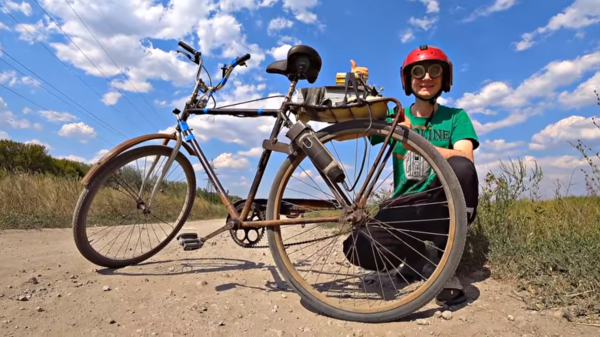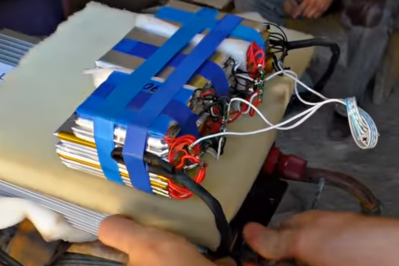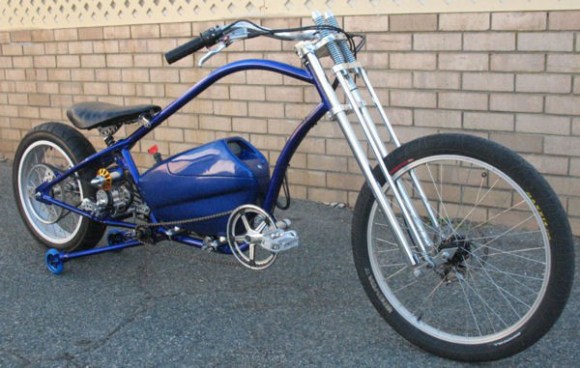[GreatScott] has now joined the ranks of Electric Bike users. Or has he? We previously covered how he made his own lithium-ion battery pack to see if doing so would be cheaper than buying a commercially made one. But while it powered his E-bike conversion kit on his benchtop, turning the motor while the wheel was mounted in a vice, that’s no substitution for a real-world test with him on a bike on the road.
Since then he’s designed and 3D printed an enclosure for his DIY battery pack and mounted it on his bike along with most of the rest of his E-bike kit. He couldn’t use the kit’s brake levers since his existing brake levers and gear-shift system share an enclosure. There also weren’t enough instructions in the kit for him to mount the pedal assistance system. But he had enough to do some road testing.
Based on a GPS tracker app on his phone, his top speed was 43 km/h (27 miles per hour). His DIY 5 Ah battery pack was half full after 5 km (3.1 miles) and he was able to ride 11.75 km (7.3 miles) on a single charge. So, success! The battery pack did the job and if he needs to go further then he can build a bigger pack with some idea of how it would improve his travel distance.
Sadly though, he had to remove it all from his bike since he lives in Germany and European rules state that for it to be considered an electric bike, it must be pedal assisted and the speed must the be progressively reduced as it reaches a cut-off speed of 25 km/h (15 miles per hour). In other words, his E-bike was more like a moped or small motorcycle. But it did offer him some good opportunities for hacking, and that’s often enough. Check out his final assembly and testing in the video below.
Continue reading “[GreatScott] Tests His DIY Battery Pack On His E-Bike” →

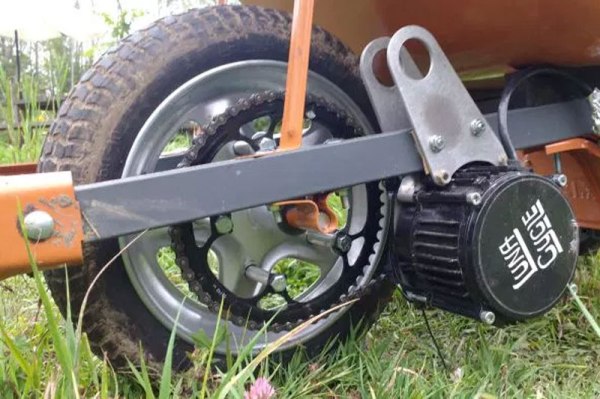

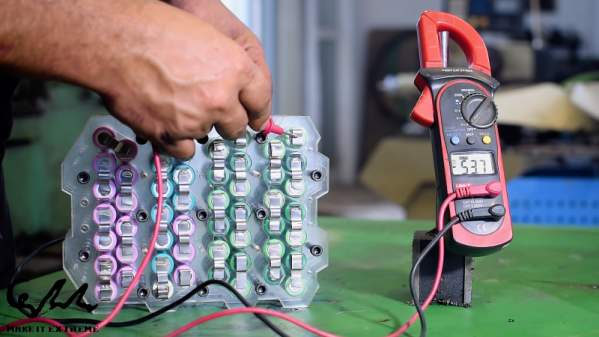


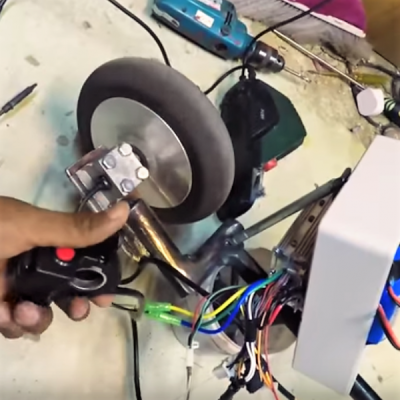 We have to admit that we raised a wary eyebrow as we first watched [MakerMan]’s video below. We thought it was going to be just another hoverboard hack at first, but as we watched, there were some pretty impressive fabrication skills on display. Yes, the project does start with tearing into a defunct hoverboard for parts, primarily one wheel motor and the battery pack. But after that, [MakerMan] took off on a metalworking tear. Parts of the hoverboard chassis were attached to a frame built from solid bar stock — we’ll admit never having seen curves fabricated in quite that way before. The dead 18650 in the battery pack was identified and replaced, and a controller from an e-bike was wired up. Fitted with a thumb throttle and with a bit of padding on the crossbar, it’s almost a ride-upon but not quite. It seems to move along at quite a clip, even making allowances for the time-compression on the video.
We have to admit that we raised a wary eyebrow as we first watched [MakerMan]’s video below. We thought it was going to be just another hoverboard hack at first, but as we watched, there were some pretty impressive fabrication skills on display. Yes, the project does start with tearing into a defunct hoverboard for parts, primarily one wheel motor and the battery pack. But after that, [MakerMan] took off on a metalworking tear. Parts of the hoverboard chassis were attached to a frame built from solid bar stock — we’ll admit never having seen curves fabricated in quite that way before. The dead 18650 in the battery pack was identified and replaced, and a controller from an e-bike was wired up. Fitted with a thumb throttle and with a bit of padding on the crossbar, it’s almost a ride-upon but not quite. It seems to move along at quite a clip, even making allowances for the time-compression on the video.